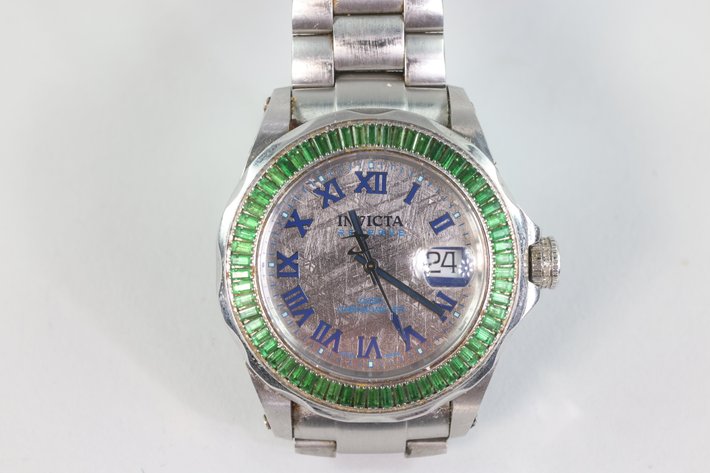__primary.png?v=1692036071)
In the vast tapestry of human history, both tangible and intangible, there lies a delicate balance between collective memory and individual passion. For centuries, we've entrusted public museums with the colossal responsibility of safeguarding our shared past. These institutions stand tall, echoing stories from bygone eras, immortalizing artists, and bearing witness to civilizations that once flourished. However, as grand and comprehensive as these museums might be, they are, in many ways, curated by consensus, seeking to capture the broadest strokes of our shared journey.
Enter the private collector.
Often working in the shadows, these individuals, driven by an unparalleled passion, curate pieces that resonate on a deeply personal level. Their collections, untouched by the often homogenizing hand of bureaucracy, offer fresh perspectives, challenging traditional narratives, and inviting us to see history through a different lens. The debate on the significance of public museums versus private collections is not a new one, but as the world evolves and the ways we interact with art and history transform, it's time to reevaluate the merits of these two custodians of our past.
In this exploration, we're not aiming to undermine the undeniable value of public museums. Instead, we seek to illuminate the often-overlooked allure and potential of private collections. These hidden troves, meticulously built over lifetimes, can rival the grandeur of any museum. But how, you might wonder? Let's delve into this captivating world, where personal narratives intertwine with historical artifacts, creating tapestries of stories that are both intimate and universal.
The Drawbacks of Public Museums
The grand edifices of public museums stand as magnificent testaments to humanity's achievements, bridging eras and cultures. Yet, within these hallowed walls, certain limitations become evident. A vast majority of museums grapple with the paradox of possessing overwhelming inventories but only being able to showcase a fraction. While visitors marvel at the displays, many artifacts remain relegated to the shadows, unseen for years. This contrasts starkly with private collections, where due to their curated nature, each item often claims its rightful place in the spotlight.
The operational complexities of public museums often introduce significant challenges. Many are entwined in layers of bureaucracy, especially when state-funded, which can slow down decision-making processes, hinder exhibit updates, or delay the integration of new technologies. Moreover, the presence of external stakeholders, be it sponsors, donors, or political entities, can sometimes skew the museum's narrative. This influence poses questions about the authenticity and representation of exhibits. Furthermore, financial constraints, which many institutions face, can affect not only the quality of artifact conservation but also the scope and impact of educational outreach.
Lastly, the inherent need to cater to a vast and diverse audience sometimes means playing it safe. Museums may shy away from controversial topics, limiting their narratives to more universally palatable ones. Private collections, unencumbered by such considerations, often venture where public institutions hesitate, offering a more unfiltered and daring exploration of art and history.
The Passion Behind Private Collections
There's something intrinsically profound about private collections — they often represent the heart and soul of the individuals behind them. Each item is not just a piece of art or a relic of history; it's a chosen fragment of a collector's journey, passion, and personal narrative.
At the core of every private collection is an inherent passion. Whether it's an obsession with a specific era, an admiration for a particular artist, or a fascination with certain materials or techniques, these passions fuel the meticulous curation of items. Unlike public museums that aim to represent broad swatches of history or cater to a general audience, private collections can hone in on niche areas, thereby offering a focused, intense perspective.
Take, for instance, the esteemed collection of Peggy and Solomon Guggenheim. Their undying love for modern art led them down roads less traveled, introducing them (and subsequently the world) to then-unknown artists and revolutionary styles. Their collection wasn't just about accumulating artworks; it was about building a narrative of modern art's evolution, and their personal role in championing it.
It's also worth noting that the motivations behind private collections can be diverse. For some, it's about preserving their cultural or familial heritage. For others, it might be the thrill of the chase, the joy of discovery, or the desire to own a piece of the past. And then there are those who collect to challenge societal norms or make bold statements, curating collections that provoke thought, discussion, and sometimes even controversy.
Such depth of motivation often leads to more insightful, personalized collections. Each piece, whether purchased from a world-renowned auction or discovered in a hidden corner of the world, has a story to tell — a story that intertwines with the collector's own journey.
Flexibility of Display and Curation
In the vast world of art and artifacts, not all pieces are created equal, and not all narratives fit neatly into the expected mold. The magic of private collections lies in their inherent ability to break away from the norm and offer something profoundly unique. Without the constraints of public opinion or bureaucratic oversight, private collectors possess a freedom that is both enviable and powerful.
Firstly, consider the process of curation in public museums. While their goal is commendable, seeking to educate and inspire the widest audience possible, it often comes with the challenge of catering to a broad spectrum of tastes and sensibilities. The result? Displays that, while impressive, may sometimes lean towards the safe and generic. Private collectors, on the other hand, are bound by no such expectations. Their collections can be daring, niche, or deeply personal, offering a fresh perspective often absent from more mainstream displays.
Moreover, private collections have the agility to adapt swiftly. If a collector stumbles upon a groundbreaking new piece or wishes to redesign their gallery based on new insights or themes, they can do so at their own pace, without the red tape that often hampers larger institutions. This dynamic approach to display means that private collections can often be at the forefront of innovative and avant-garde presentations.
And then there's the aspect of controversy. History, as we well know, is replete with challenging narratives and provocative artworks. While public museums might sometimes tread lightly around such pieces, wary of public backlash or political repercussions, private collectors can embrace them wholeheartedly. By housing and showcasing controversial or unconventional pieces, they invite viewers into deeper, more nuanced conversations about the past and its resonance in our present.
In essence, the flexibility afforded to private collections isn't just about the freedom to display as they wish, but the ability to challenge, provoke, and inspire in ways that public institutions might sometimes find challenging.
Intimate Viewing Experiences
Public museums provide a sweeping canvas of art and history, catering to masses with their vast collections. In contrast, private collections offer a distilled, personalized journey that resonates on a more profound level. Without the constant hum of bustling visitors, these collections allow for a serene environment where each artifact can truly shine. The controlled crowd size and specifically tailored environments — optimized in terms of lighting, layout, and atmosphere — ensure that each piece is presented in its best light, allowing for a richer visual and emotional experience.
Yet, it's not just about viewing; it's about engagement. Attendees at private collections often have the unique opportunity to converse directly with the collectors or subject-matter experts. This direct interaction fosters a deeper understanding and appreciation of each artwork or relic, transforming a simple visit into a memorable learning experience. Immersive storytelling, whether through guided tours, innovative technologies, or personal anecdotes, amplifies this engagement, making the history behind each item palpable and alive.
The allure of private collections isn't solely in their curation but also in their exclusivity and novelty. To be among the select few, experiencing artifacts in such an intimate setting, imparts a sense of privilege. Coupled with the chance to witness rare or unique pieces, not commonly displayed elsewhere, the visit becomes not just an appreciation of art or history, but a story in itself — a story of connection, reflection, and personal discovery.
The perennial debate between public museums and private collections is more than just a comparison of venues; it's a reflection of the evolving ways in which we engage with art and history. Public museums, with their grandeur and scale, undeniably play a pivotal role in preserving and presenting global heritage. However, their vastness can sometimes lead to obscured narratives, oversight of niche treasures, and a somewhat impersonal viewing experience.
Private collections, on the other hand, emerge as intimate sanctuaries of passion and dedication. Their foundation lies in the personal journeys of collectors, where every artifact carries a story, a memory, or a dream. This personal touch extends to the very walls that house these collections, allowing for fluid displays, swift curatorial decisions, and a depth of narrative that's hard to replicate in larger institutions. Visitors to these spaces are not just observers but participants in a deeply personal exploration of art, culture, and history.
In essence, while public museums serve as broad gateways to the world's treasures, private collections offer narrow, winding paths that lead to hidden gems, personal tales, and unparalleled intimacy. Both have their merits, but for those seeking a unique, tailored, and heartfelt engagement with the artifacts of our past and the art of our present, private collections often emerge as unparalleled havens of discovery.













